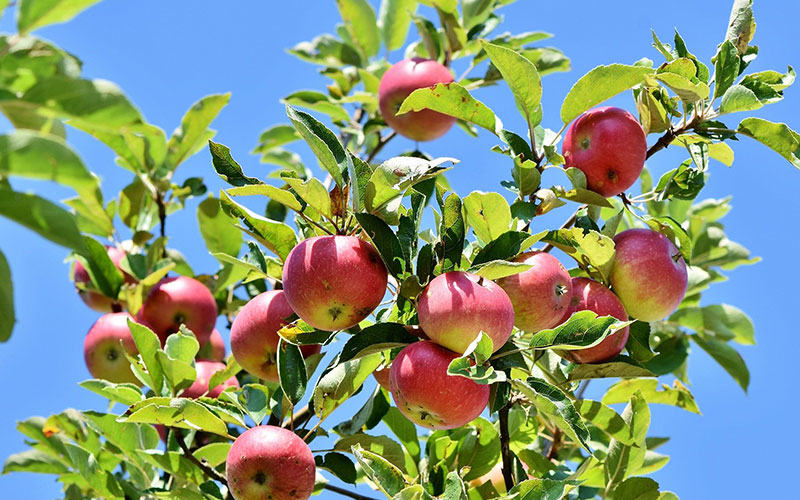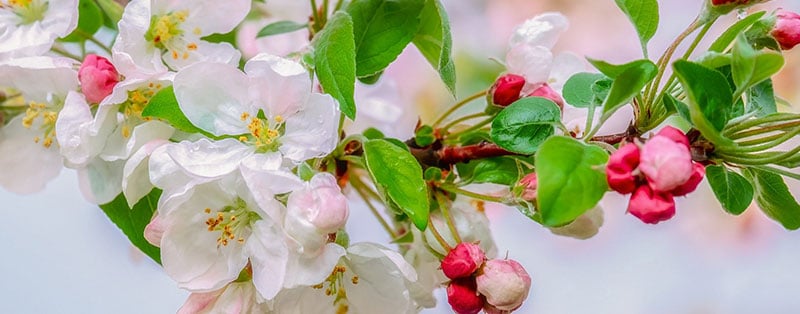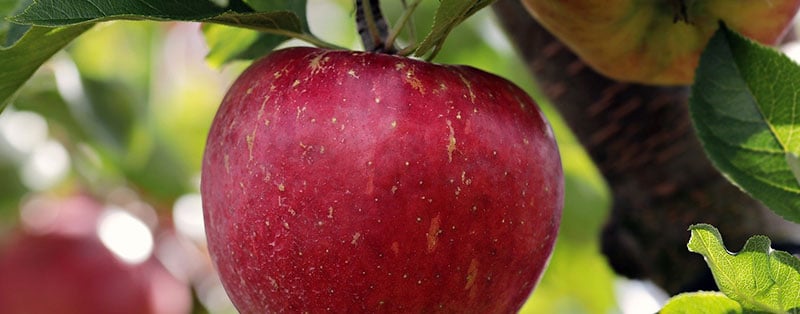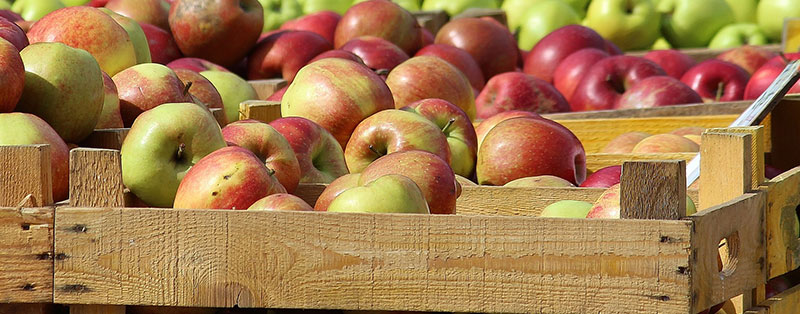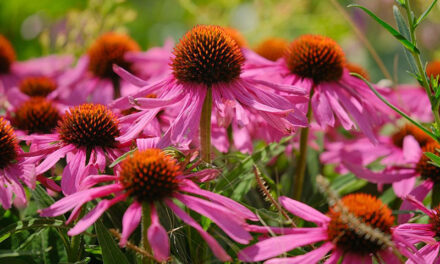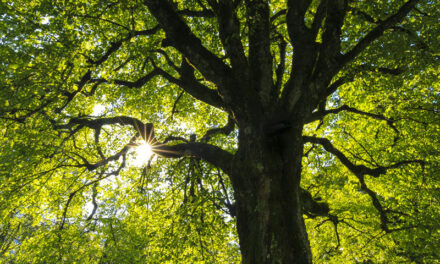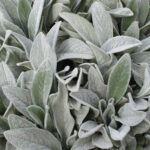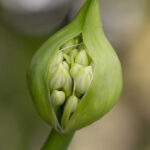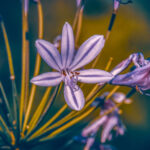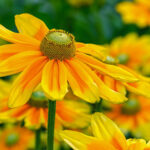A delicious apple to quench the thirst, what could be nicer than enjoying an apple from your own garden? In autumn, the shiny apples are ready to be picked. Apple trees come in many shapes and sizes, with wild apples, ornamental apples and edible apples. Read on to learn more about apple trees.
The apple tree
Apple trees can be bought in various forms; standard, half-stem and low-stem. You can also get them in espalier shapes or as mini trees. Apple trees are mainly bought for their fruits. But the tree itself and the blossom in spring are also worth it.
Blossom
The blossoms of most apple trees are pink or red in color on the outside and white on the inside. In general, the apple tree blooms in late April and early May. This depends on the temperature and the weather. Most trees don’t bloom for longer than two weeks a year.
Fruits
When choosing the species you want to plant, you can also choose the type of fruit. These are the options:
- Wild apple, the Malus Sylvestris is a wild apple. It has inedible, small, yellow fruits.
- Ornamental apple, these apples have blossoms in spring in shades of white, pink and red. In autumn they grow yellow to red ornamental apples. The fruits are edible, but usually not very tasty.
- Edible apple, you have to pay attention to whether it is a self-pollinating species or one you have to put another apple tree nearby for pollination. The trees pollinating each other must be from a different species and bloom at the same time. If you don’t have a self-pollinating tree and there are no trees nearby, you won’t have any fruit in autumn.
Planting apple tree
An apple tree does not make many demands for its soil. It is important that the drainage is good. The tree prefers not to stand with its roots in the water. A large apple tree obviously needs more space than a small tree. So check which type of apple tree you want to plant and how big it will get.
Choose a suitable place
The soil in which an apple tree fits best is a moderately to neutrally acidic soil. This means that the PH value must be between 5.5 and 7. Apple trees enjoy being in a sunny spot, but can also tolerate partial shade. It is best to plant the tree in a period between November and March.
Digging a pit
If you are going to plant an apple tree, dig a hole 10 centimeters deeper than the pot the plant is in. If the plant is not in a pot, dig 10 centimeters deeper than the measurement from where the soil was to the longest root. Fill the hole at the bottom with 10 centimeters of organic material such as compost. This will make the top of the rootball level with the soil surface. Make sure that the place where the tree is grafted is at least 5 centimeters above the ground.
The planting itself
Before you put the root ball in the hole, make sure that the roots are well submerged in a large container of water and the root ball is filled with it. This will get your tree off to a good start. After that plant the tree and fill the hole with soil. Press the soil firmly, but be careful not to damage the roots. If necessary, you can support the tree with a tree pole. You put about a third of this in the ground. Secure the apple tree with a rubber band. Sprinkle some compost or bark around the trunk if necessary, so that the soil can retain the moisture well.
Apple tree care
In addition to planting and pruning, an apple tree does not require much care. Depending on the acidity of your soil, you could lime some in February. In the month of March you can fertilise with an organic fertiliser.
Depending on the species, you can harvest from the apple tree in the months of August to October. This differs per type of apple tree. One species is best picked in time, while the other prefers to hang on the tree a little longer to become tasty. This way you can keep one apple much longer than the other.
Search for your species on the internet or check with the grower what applies to the species you have in your garden. Pruning time is in the period from November to early March.
Moving the apple tree
An apple tree can be transplanted in the period of November until February. You can also prune the tree immediately after moving it. The growth of the tree stops during this time. Make sure you choose a frost-free day or days when you plan to move the tree. If you have the chance and can already prepare it, insert the roots around the tree on the side, in a wide circle. The roots will then create small new roots there, making the root ball more compact.
When moving, you only pierce the bottom roots. The tree has been able to extract its nutrition and moisture from the soil during the remaining year. Then move the tree to the same hole as when planting the tree. Provide an organic layer on the bottom in the planting hole. Press the soil well and water the roots. Not only does this water keep the tree from drying out, it also flushes the sand into place between the roots.
Apple tree in pot
Nowadays there are enough species that are bred to stay smaller. These are very suitable to keep in a pot if you have a smaller garden or a balcony. Choose a mini apple tree for this, these are also known as mini tree, dwarf tree, ballerina apple tree or patio apple tree.
They can get less nutrition and moisture from the soil in the pot, therefore it is important that you give them these yourself. Water when the plant bears leaves. This is not necessary in the winter. A suitable food for the apple tree in a pot is organic fertiliser. A suitable pot is at least 50 liters. Make sure that there are holes at the bottom of the pot and a layer of Hydro granules, so that the excess rainwater can drain. Another important tip is to make sure you choose a pot that can withstand frost in winter.
Apple tree cuttings
It appears from research that cuttings from an apple tree are not very successful and are therefore not done as often as you’d think. There are of course exceptions to this and not all species happen to be the same.
The tree will have more success when you graft it. You place a branch of your apple tree on a root-bearing part of another apple tree, so that they together form a new tree. Simply put, you make a cut in a rootstock with a root. In this cut you put a cut twig of your desired kind and wrap it with twine. The rootstock and the graft must have a certain connection, in this case that both are apple trees or fruit trees.
Apple tree pruning
Pruning fruit trees are quite similar. The reason you prune a fruit tree is that light must be able to reach the fruit in order to get tasty apples. The twigs of an apple tree should be between 45 and 90 degrees from the trunk, so the apples don’t hang in each other’s way and they all get the same amount of sunlight. As a result, the tree responds by producing thin, limp, upright shoots, also known as water shoots. These are not very useful and must be pruned away. Cut the twigs above the thickening of the trunk, you can leave this. Cut off the new branches on the outside of the tree about 1/3, just above the leaf buds. The following year, these leaf buds will turn into fruit buds.
When to prune an apple tree?
You prune the apple tree when it is dormant, e.g. in winter, between November and March. If you want to move your apple tree, prune as you move. This keeps your balance, you lose roots when digging out the tree and branches on the tree at the same time.
Pruning an apple tree in summer
In the summer you generally do not need to prune. You can prune away dead branches or branches that really bother you. If you have pruned a lot in the winter, the tree will also produce a lot of water shoots. You can also prune these away in June, after all, as this is of no use to you.
Diseases and pests of an apple tree
The most common pests of the apple tree are the codling moth, aphid, fruit spider mite and rust mites. Scab and rust are the most well-known fungal diseases. In addition, there are many different insects and pests that can affect your apple tree. It is therefore important to ensure a good, strong and healthy tree. Place it in good conditions and environments. This prevents most of the infestation and if the tree is nevertheless affected, it is most likely to recover. For this reason, check your plants and trees regularly, the sooner you discover a pest or disease, the faster you can fight it.
Fruit moth
Small white caterpillars with a brown head, that’s what codling moths look like. They burrow themselves into the core of the fruit, causing it to fall off prematurely. This pest insect is found all around the world. They can be controlled biologically with pheromones.
Aphid
Aphids you find on the leaves of your apple tree, often on the backside of the leaf. Read aphids on your plants? 7 tips to take control for more information on aphids. There are different kinds of aphids, such as the wooly apple aphid that specifically target your apple tree.
Fruit spider mite and rust mite
The fruit spider mite is a pest for many fruits, in the absence of natural enemies. The mites suck the cells empty on the backside of the leaf, causing the leaves to dry out and fall off. In winter you can find the red eggs on the perennial wood of the tree.
Mildew
Mildew can be recognized by its white mealy substance on the leaf. Over time, the white color turns into a darker grey. When you discover the infestation, make sure to water the plant well and remove the infested parts. You can also fight it with the mildew ladybug.
Scabies
Scab affects all parts of the tree. Olive-green, brown-grey to black spots that are formed on the leaves, bark, branches, stems and fruits. Rough spots form on the branches and the leaves can fall off prematurely due to this infestation.

